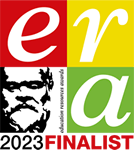It includes:
- Student Learning Record Workbook (for use by students)
- Student Learning Record Answers (for use by teachers)
- End of Topic test and answers
- Lesson PowerPoint’s for every lesson
- Any associated answers or references sheets for class activities
This topic covers:
1.2.1 Primary storage (Memory)
- The need for primary storage
- The difference between RAM and ROM
- The purpose of ROM in a computer system
- The purpose of RAM in a computer system
- Virtual memory
1.2.2 Secondary storage
- The need for secondary storage
- Common types of storage
- Optical
- Magnetic
- Solid state
- Suitable storage devices and storage media for a given application
- The advantages and disadvantages of different storage devices and storage media relating to these characteristics:
- Capacity
- Speed
- Portability
- Durability
- Reliability
- Cost
1.2.3 Units
- The units of data storage:
- Bit
- Nibble (4 bits)
- Byte (8 bits)
- Kilobyte (1,000 bytes or 1 KB)
- Megabyte (1,000 KB)
- Gigabyte (1,000 MB)
- Terabyte (1,000 GB)
- Petabyte (1,000 TB)
- How data needs to be converted into a binary format to be
processed by a computer - Data capacity and calculation of data capacity requirements
1.2.4 Data storage
Numbers
- How to convert positive denary whole numbers to binary numbers (up to and including 8 bits) and vice versa
- How to add two binary integers together (up to and including 8 bits) and explain overflow errors which may occur
- How to convert positive denary whole numbers into 2-digit hexadecimal numbers and vice versa
- How to convert binary integers to their hexadecimal equivalents and vice versa
- Binary shifts
Characters
- The use of binary codes to represent characters
- The term ‘character set’
- The relationship between the number of bits per character in a character set, and the number of characters which can be represented, e.g.:
- ASCII
- Unicode
Images
- How an image is represented as a series of pixels, represented in binary
- Metadata
- The effect of colour depth and resolution on:
- The quality of the image
- The size of an image file
Sound
- How sound can be sampled and stored in digital form
- The effect of sample rate, duration and bit depth on:
- The playback quality
- The size of a sound file
1.2.5 Compression
- The need for compression
- Types of compression:
- Lossy
- Lossless







